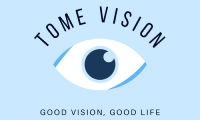The Connection Between Diabetes and Eye Health
Diabetes is a chronic condition that affects the body’s ability to regulate glucose in the blood. It can lead to various complications, including damage to vital organs such as the eyes. When left uncontrolled, diabetes poses a significant risk to eye health and can even cause blindness. Understanding the connection between diabetes and eye health is crucial for both individuals living with diabetes and those at risk of developing the condition.
The Link:
Diabetes can lead to a condition called diabetic retinopathy, which is the most common diabetic eye disease. High blood sugar levels cause damage to the blood vessels in the retina, the thin layer of tissue at the back of the eye responsible for transmitting light signals to the brain. Over time, this damage can result in vision impairment or blindness.
Another condition associated with diabetes is diabetic macular edema (DME), which occurs when fluid leaks into the macula, the central part of the retina responsible for detailed vision. DME can cause blurred vision and ultimately lead to vision loss.
Subheading: Symptoms and Prevention
Understanding the symptoms of diabetic eye disease is crucial for early detection and intervention. Common symptoms include:
1. Blurred or distorted vision
2. Floaters or spots in the field of vision
3. Difficulty seeing at night
4. Loss of peripheral vision
5. Eye pain or pressure
6. Double vision
To prevent these symptoms and manage the progression of diabetic eye disease, maintaining optimal blood sugar levels is essential. Consistently monitoring blood sugar levels as advised by healthcare professionals, following a healthy diet, engaging in regular physical activity, and taking prescribed medications are all vital steps in preventing or managing diabetes-related eye complications.
Additionally, regular eye examinations should be a priority for individuals living with diabetes. These exams allow eye care professionals to detect any early signs of retinal damage or other eye conditions. Early intervention increases the likelihood of successful treatment and reduces the risk of permanent vision loss.
Subheading: Treatment Options
If diabetic eye disease is detected, several treatment options are available depending on the severity of the condition. These include:
1. Laser treatment: Laser therapy can help seal leaking blood vessels and reduce swelling in the retina. It aims to prevent further vision loss and maintain existing vision.
2. Intravitreal injections: Medications injected into the eye can help reduce swelling and prevent the growth of abnormal blood vessels. These injections are typically administered along with laser treatment for better outcomes.
3. Vitrectomy: In advanced cases of diabetic eye disease where bleeding in the eye or scar tissue leads to severe vision loss, a vitrectomy may be necessary. This surgical procedure removes the gel-like substance (vitreous humor) from the center of the eye and replaces it with a clear saline solution.
Bullet List:
– Diabetes increases the risk of developing various eye conditions, including diabetic retinopathy and diabetic macular edema.
– Maintaining optimal blood sugar levels through healthy lifestyle choices is crucial in preventing and managing diabetic eye disease.
– Regular eye examinations are essential for early detection and timely intervention.
– Treatment options for diabetic eye disease include laser treatment, intravitreal injections, and vitrectomy.
In conclusion, diabetes and eye health are closely linked. It’s vital for individuals living with diabetes to understand the risks and take proactive steps to maintain their eye health. By managing blood sugar levels, attending regular eye examinations, and following prescribed treatments, individuals can reduce the risk of complications and maintain good vision for years to come.
